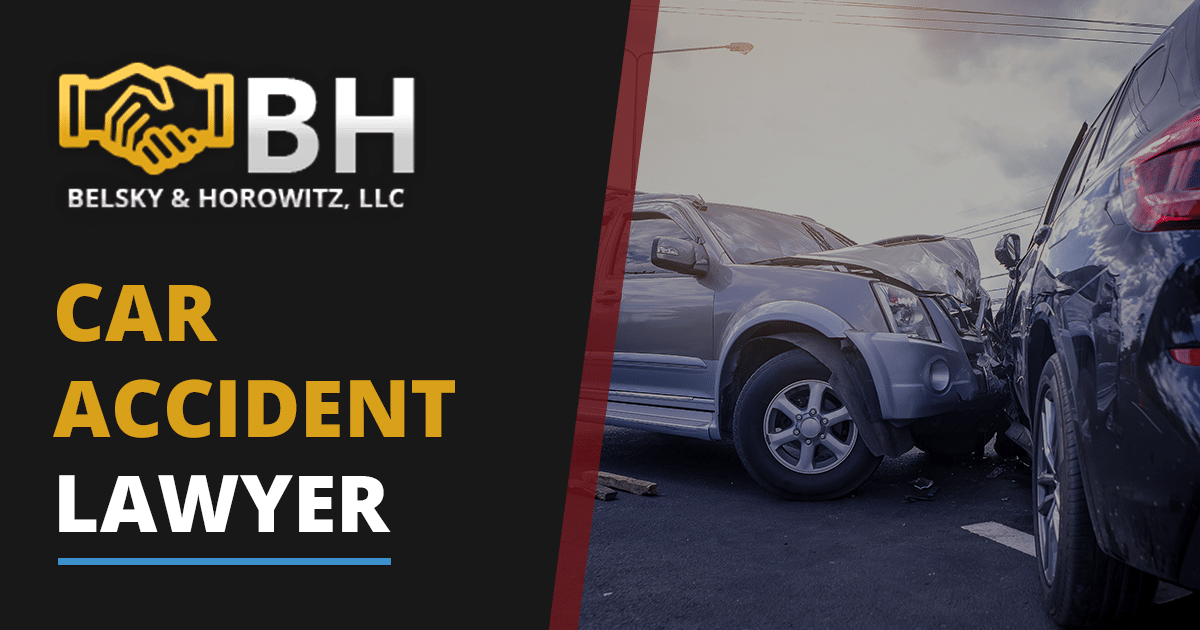
Being in a car accident is traumatic and stressful on its own, and often, the aftermath can be just as distressing. Victims of car accidents may have serious, long-lasting injuries that drive up medical debt on top of car repairs or needing to purchase a new vehicle. Luckily, you don’t have to deal with all of this on your own.
At Belsky & Horowitz, LLC, our qualified Baltimore car accident lawyers have extensive experience with cases just like yours.
If you or someone you love has been involved in a vehicle collision and want to know your next best steps or are considering pursuing legal action against those responsible, we can help!
How Do Car Crashes Happen?
The most common cause of car accidents is driver error or negligence. While you may be a safe driver, those around you may not and you can still be involved in a car accident due to others’ negligent actions.
Some of the most common causes of car crashes on our city’s streets are:
- Distracted driving
- Speeding
- Reckless or aggressive driving
- Failure to yield right of way
- Driving under the influence (either drugs or alcohol)
- Adverse weather conditions
- Road construction
No matter the cause of your collision, your lawyer will help you determine the exact details and timeline to strengthen your case and secure you the maximum amount of compensation for damages.
Most Dangerous Roads in Baltimore
According to Zero Deaths Maryland, there were approximately 108,443 car accidents in Maryland in 2022, of these, 534 were fatal. Any road can be dangerous, but some are more so than others, with more frequent accidents occurring. Some of the most dangerous intersections in Baltimore are the following:
- Gwynns Falls Pkwy & Reisterstown Rd
- N Caroline St & E Baltimore St
- Bank St & S Wolfe St
- Frankfurst Ave & Shell Rd (where they merge near Harbor Tunnel Hwy)
However, even if you avoid these intersections, there is no guarantee that you won’t get into an accident elsewhere. If you have the misfortune of being involved in a vehicle collision, our lawyers from Belsky & Horowitz, LLC can help.

What To Do After Your Wreck
When you’re involved in a collision, especially one that results in injuries, you need to seek medical attention as soon as possible. Even a minor accident can cause serious injuries if not treated promptly.
While at the scene of the accident, contact local law enforcement and make sure you take videos and photos of the vehicles involved and the scene itself. You should also exchange information with the other driver(s) involved, such as contact and insurance information, and take down witness statements from anyone nearby who saw the accident.
Collecting all of this information and presenting it to a lawyer will strengthen your case and increase your chances of receiving compensation from the at-fault party.
Injuries That Occur During Vehicle Collisions
Sometimes, a car accident may be minor, and those involved may assume that they’re not injured, but that’s not always the case. A good rule of thumb is that if your car is damaged, you likely are as well, and you should be checked out by a medical professional right away to rule out serious injury.
The most common injuries our office sees from car accidents are the following:
- Bruises and lacerations
- Broken or fractured bones
- Whiplash and spinal cord injuries
- Head and neck injuries
- Traumatic brain injuries (TBIs)
- Internal injuries
- Lost limbs
- Wrongful death
When recovering from an injury sustained in a vehicle collision, costly medical care is often needed, sometimes for lengthy amounts of time. You should speak with a car accident lawyer as soon as possible after your accident so that they can determine if the details of your case make you eligible for compensation.
Damages You Can Collect
In most personal injury cases, there are two different types of damages for which victims can receive compensation: Economic and noneconomic.
Economic damages are compensation for monetary losses or costs that can be easily calculated, while noneconomic damages are more difficult to estimate and are more subjective.
Economic Damages:
- Medical bills
- Lost wages
- Loss of ability to earn income
- Physical impairment
- Scarring and disfigurement
- Property damage
Noneconomic Damages:
- Mental distress
- Pain and suffering
- Loss of enjoyment of life
Every case is different, and the compensation you may receive might be different from what someone else receives. But having a car accident attorney on your side guarantees that you will get the most compensation possible and that your case will be well-represented.
It’s also important to know that the state of Maryland has what is called a contributory negligence law.
This means that if you are proven to be even partially at fault for the accident you’ve been involved in, you won’t be legally allowed to pursue compensation from the other driver.
If the at-fault driver and their legal team attempt to prove that you were partially at fault, your lawyer will be able to assist you.

Why You Should Involve a Lawyer
Car accidents and resulting injuries happen in Baltimore every day, no matter how safe drivers are. When you’re involved in a vehicle collision, you are not legally obligated to hire an attorney; however, we strongly suggest you reach out to our office as soon as you can.
Our expert legal team at Belsky & Horowitz, LLC has decades of experience handling cases like yours.
Your lawyer will:
- Ensure all of the information you collected at the scene of your accident is organized and complete.
- Obtain any police reports or other accident reports.
- File your claim against the negligent driver (within the three-year statute of limitations).
- Negotiate a settlement with the at-fault driver, their insurance company, or their lawyer.
- Represent you in court if settling out of court doesn’t work.
The most important thing in the aftermath of a traumatic and confusing experience such as a car accident is to make sure you receive the proper medical attention and treatment for any injuries.
While you’re healing, your lawyer will do everything listed above and ensure the responsible party is held accountable. Don’t hesitate to call us for your free consultation today and see how we can help!






